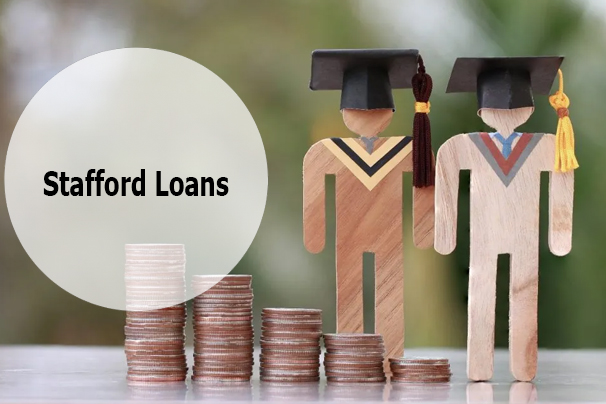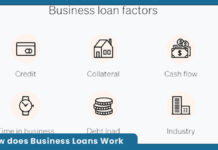Stafford Loans used to be a type of student loan offered by the United States Department of Education to eligible students enrolled in accredited American colleges and universities, assisting them in covering their educational expenses.

The terms governing these loans were outlined in Title IV of the Higher Education Act of 1965, which underwent revisions over time to ensure repayment to the lender if a student failed to fulfill their loan obligations.
However, as of July 1, 2010, Stafford Loans became unavailable, having been replaced by the William D. Ford Federal Direct Student Loan Program.
In 1988, the Federal Guaranteed Student Loan program underwent a name change to become the Robert T. Stafford Student Loan program, a tribute to U.S. Senator Robert Stafford, a Republican from Vermont, who made significant contributions to higher education.
What’s more? Read on to find out.
What Are Stafford Loans?
Stafford Loans are low-interest loans available for qualified students to assist in paying for higher education at a four-year college or university, community college, trade, career, or technical school.
The loans are part of the William D. Ford Federal Direct Loan (Direct Loan) Program, and qualified students can borrow directly from the U.S. Department of Education at participating schools.
Types Of Stafford Loans
There are two (2) types of Stafford loans, and they are as follows: subsidized loans and unsubsidized loans.
Subsidized Loans
The subsidized loan is granted according to financial need, assessed through the information provided in your Free Application for Federal Student Aid (FAFSA).
If you qualify for a subsidized Stafford loan, you will not accrue interest while enrolled in school on at least a half-time basis.
This interest-free benefit extends through a grace period of up to six months after you are no longer registered on at least a “half-time” basis or during specific deferment periods.
The federal government subsidizes the interest during these periods, alleviating the financial burden on the borrower.
Unsubsidized Loans
The unsubsidized loan is not granted based on financial need, yet you are still required to apply using the FAFSA. Interest accrues from the moment the loan is disbursed until it is fully repaid.
Nevertheless, you have the option to opt for interest payments while in school or during any grace or deferment period.
Should you allow interest to accumulate during these periods, it will be capitalized. This entails adding the accrued interest to the principal amount of your loan. This would result in additional interest being calculated based on the higher total.
How Does Stafford Loan Work?
Graduate and undergraduate students are eligible to apply for Stafford loans, administered under the Federal Direct Loan Program.
These loans may be either subsidized, with the government covering the interest while the borrower is in school, or unsubsidized, where the borrower is responsible for all interest payments.
The Federal Family Education Loan Program, previously responsible for issuing Stafford loans, concluded in 2010. Presently, all federal loans are facilitated through the Direct Loan Program.
Subsidized Stafford loans are exclusively available to undergraduate students demonstrating financial need. In contrast, both graduate and undergraduate students can secure direct, unsubsidized loans, and financial need is not considered.
Loan amounts vary depending on the student’s academic level and conditions. The maximum subsidized amounts are $3,500 annually for freshmen, $4,500 for sophomores, $5,500 for juniors, and $5,500 for older students or fifth-year students. The student’s dependency status also influences the borrowing limits.
Stafford Loan Requirements
The initial step to qualify for a Federal Direct Stafford Loan involves completing and submitting the Free Application for Federal Student Aid, or FAFSA.
The majority of students are likely to qualify for some type of financial aid, but the specific options available to you remain unknown until you submit your FAFSA.
Stafford Loans stand as the most prevalent form of financial aid accessible to college-bound students, with almost every applicant being eligible for either a subsidized or unsubsidized loan package.
How To Apply For Stafford Loans
To be eligible for any Stafford Loan, your first step is to complete the FAFSA. If you are approved for need-based, subsidized Stafford Loan funds, you will receive notification.
Additionally, you have the option to apply for unsubsidized Stafford Loan funds. Even if you’ve already been approved for subsidized funds.
After selecting a lender for your student loan, the next step is to fill out the Master Promissory Note for the Stafford Loan.
This document encompasses all the specifics of the loan, outlining your repayment responsibilities and the terms of the loan agreement.
- To apply for Direct Stafford Loans, fill out the Free Application for Federal Student Aid (FAFSA).
- You can apply online using FAFSA on the Web.
- you can get a paper FAFSA from your high school, local library, or postsecondary school.
If you have applied for federal student aid for the school year before the present one. You can most likely file a renewal FAFSA for the upcoming year.
With a renewed FAFSA, you only need to update any information that has changed since the earlier year and answer a few new questions.
This can save you time and effort related to filling out a completely new FAFSA form.
Stafford Loan Repayment
Repayment on Stafford loans usually starts six months after graduation, withdrawal, or dropping below half-time registration. Borrowers of Stafford Loans under the FFEL Program can opt for one of three repayment options:
- Standard Repayment Plan.
- Graduated Repayment Plan.
- Income-Sensitive Repayment Plan.
However, only those who have an FFEL program loan and are not qualified for Public Service Loan Forgiveness (PSLF) can apply for an Income-Sensitive Repayment Plan.
If you face problems making payments or prefer lower monthly payments over an extended period, you can apply for a direct consolidation loan.
This will let you qualify for alternative repayment plans, including PSLF. It is very important to note that only direct loans qualify for PSLF, while FFELP loans, like the Stafford Loan, do not qualify.
Conclusion
Students seeking a Stafford Loan must fulfill the FAFSA requirement, a standard procedure for various forms of federal financial aid.
During the period when the student is enrolled at least half-time, no principal payments are obligatory on the loan. This is referred to as in-school deferment.
Following the student’s departure from school, whether due to graduation, a shift to less than half-time enrollment, or withdrawal, a six-month grace period for repayment deferment is initiated.



